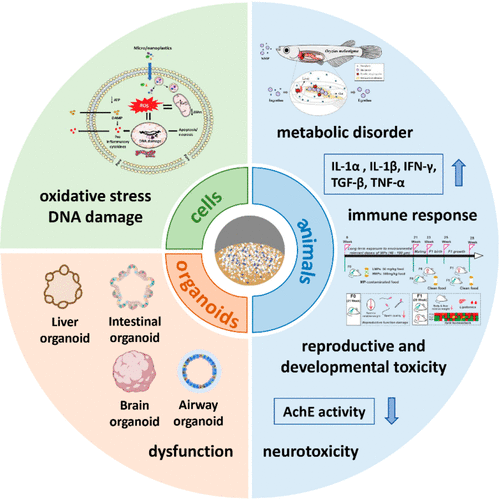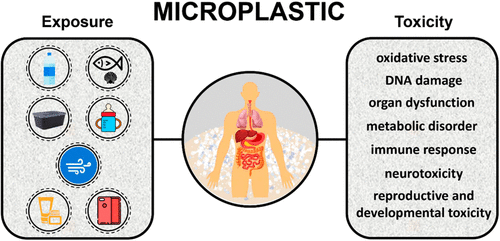Introduction
Due to rapid urbanization and industrial developments, water pollution has become one of the most critical challenges in this era. As a result of this, wastewater pollution has been occured. First of all, what do you mean by water pollution? It is nothing but the addition of pollutants into pure water. This blog will focus on need for effective wastewater management, with a particular focus on challenges faced by microplastics and the solutions to mitigate this issues.
What are Microplastics and why we are talking about it?
Microplastics are defined as those types of plastics that are less than 5 millimeters in size, resulting from a variety of sources such as microbeads found in personal care products, degraded plastic wastes and synthetic fibers from clothing and so on. Since its size is too small, we need to alert due to its pervasive presence in our biodiversity. They have been detected in many marine species, but also in drinking water and in numerous foods, such as salt, honey and marine organisms. Exposure to microplastics can also occur through inhaled air.
Where does it come to the wastewater?

Microplastics enters into nature through industrial and everyday activities. One of the most significant sources is the washing of synthetic textiles like polyester and nylon, where tiny fibers, known as microfibers, are shed and washed down the drain. Personal care products, such as exfoliating scrubs, toothpaste, and cosmetics, often contain microbeads, which are tiny plastic particles designed to be rinsed away, ultimately entering wastewater systems. Additionally, larger plastic debris, such as bottles and bags, can break down into smaller particles over time, contributing to microplastic pollution through stormwater runoff or sewage.
What impacts does it leave on society?
Microplastics producing toxic effects is a complex process and is affected by many factors including the physical and chemical properties, exposure time, additives, etc. Microplastics are not only toxic itself but also carriers for many pollutants to enter biological tissues and organs. We aim to systematically sketch their potential toxicity at the “individual-tissue-cell-subcellular” level, which will help to explore the toxicity mechanism. Due to the lack of direct research from humans, this section briefly summarizes the major effects of microplastics in present experimental models, like cells, organoids, and animals.


The intake, distribution, accumulation, and metabolism of microplastics in the human body are attracting more and more attention. A recent review indicates that microplastics are transported to the whole body through blood circulation, and the existence of microplastics are found in 15 human biological components, such as the spleen, liver, colon, lung, feces, placenta, breastmilk, etc. Pregnant women and infants are sensitive people exposed to microplastics. The concentration of PET in infant feces (5700–82,000 ng/g, median: 36,000 ng/g) is ten times higher than that in adults (2200–16,000 ng/g, median: 2600 ng/g), indicating that the exposure level of microplastics in infants may be much higher than adults.
What are its environmental impacts?
This have a huge impact in terms of environment as this affects on waterbodies, ecosystems and even human health. When these are mixed into aquatic bodies, these can cause physical harms such as reducing feeding, blockages and even deadth. Moreover, microplastics acts as carrriers for toxic chemicals like persistent organic pollutants (POP) and heavy metals, which can even lead to the diminishing nature of marine habitat.

The presense of microplastics in waterbodies disturbs the balance of ecosystem and this eventually decreases the quality of water which is to be consumed by the humans and animals. Thus they absorb pathogen which in turn makes it less suitable for agriculture and recreation. In sediments and soils, microplastics can alter the physical and chemical properties of these environments, affecting soil structure, water retention, and nutrient availability, which in turn impacts plant growth, soil organisms, and overall ecosystem health. Perhaps most concerning is the persistence of microplastics in the environment, as they break down very slowly over time, remaining in ecosystems for decades or even centuries.
Sources and transmission of harmful Microplastics and how to prevent it
Microplastics come from various sources and are transmitted through multiple pathways, making them a widespread environmental concern. One major source is synthetic textiles, where washing fabrics like polyester and nylon releases microfibers into wastewater, which often bypasses inadequate filtration systems. Personal care products containing microbeads, such as exfoliating scrubs and toothpaste, contribute to microplastic pollution as these tiny particles are washed down the drain and enter natural water bodies. Microplastics are also transmitted through several pathways, including wastewater discharge, stormwater runoff, atmospheric deposition, and direct release into water bodies.
Raising public awareness about the sources and impacts of microplastics is essential for changing consumer behavior, encouraging proper waste disposal, and promoting the selection of products without microplastics. Sustainable industrial practices, such as reducing plastic use in production, improving waste management, and developing alternatives to plastic materials, can also help prevent microplastics from entering the environment. Finally, supporting research and innovation in developing new materials, waste management techniques, and microplastic detection methods will lead to more effective solutions for preventing and mitigating microplastic pollution. By addressing both the sources and transmission pathways of microplastics and implementing preventive measures, we can significantly reduce the environmental and health impacts of these persistent pollutants.
Treatment of Microplastics in the wastewater treatment facility
Due to its small size treating microplastics seems to be very difficult. Older and conventional treatment methods seems to be very poor when handling with microplastics. For this, we need advanced filtration methods like granular activated carbon, membrane bireactors and advanced oxidation processes, which has shown good results. Moreover, by integrating technologies such as electrocoagulation and nanofiltration can accerlerate the filtration process. By implementing newer innovation, we can obviously improve this efficiency to the next level.
Sustainable Development Goals
Improving clean water and sanitation is a key global objective, as outlined in Goal 6 of the United Nations Sustainable Development Goals. This goal aims to ensure by 2030 that everyone has access to adequate and equitable sanitation and to reduce the proportion of untreated wastewater by half. Despite these targets, UNICEF highlights that 2.2 billion people around the world still lack access to safe drinking water.

While developed countries have made notable progress in providing high-quality water and sanitation services, largely eliminating virus contamination for a significant portion of their populations, many developing nations continue to struggle. This lack of access to clean water and sanitation in these regions results in numerous health issues and deaths among vulnerable populations due to waterborne pathogens and contaminated water sources.
Conclusion
Addressing the issue of microplastics in wastewater is critical for achieving sustainable water management and protecting our environment. As we work towards the United Nations Sustainable Development Goal 6—ensuring clean water and sanitation for all—we must tackle both the sources and impacts of microplastics. By investing in advanced filtration methods, promoting sustainable practices, and supporting innovative solutions, we can reduce microplastic pollution and safeguard water quality for current and future generations. Awareness events from governments, industries, and individuals are essential in creating a cleaner, healthier world where access to safe water is a reality for everyone.